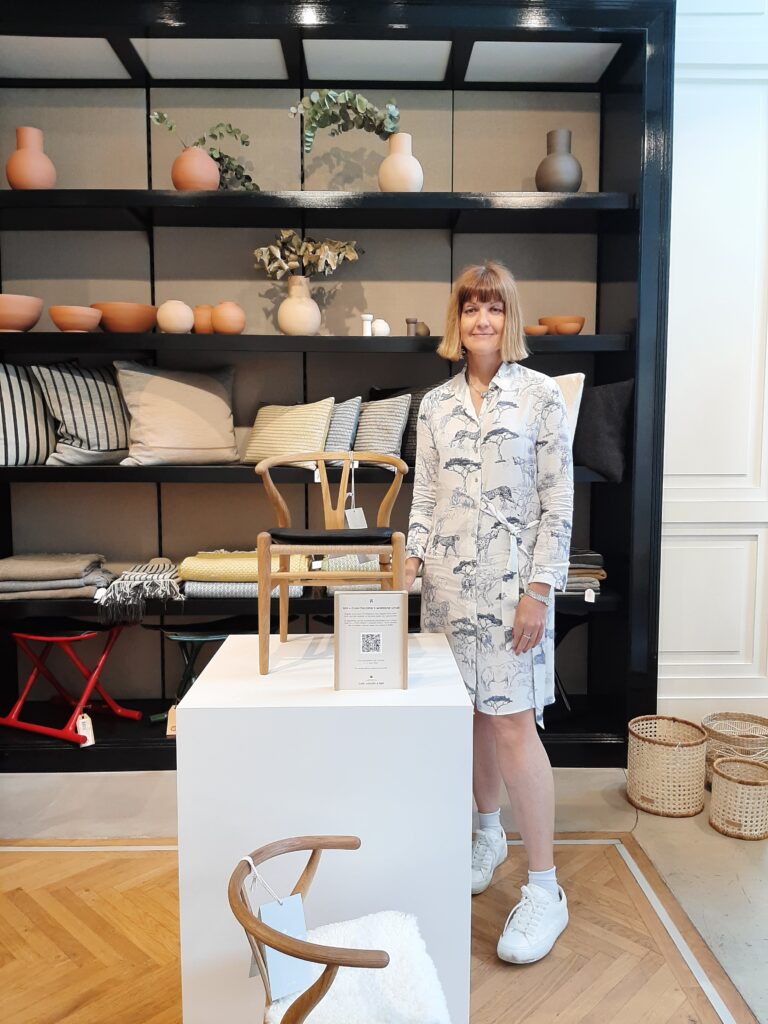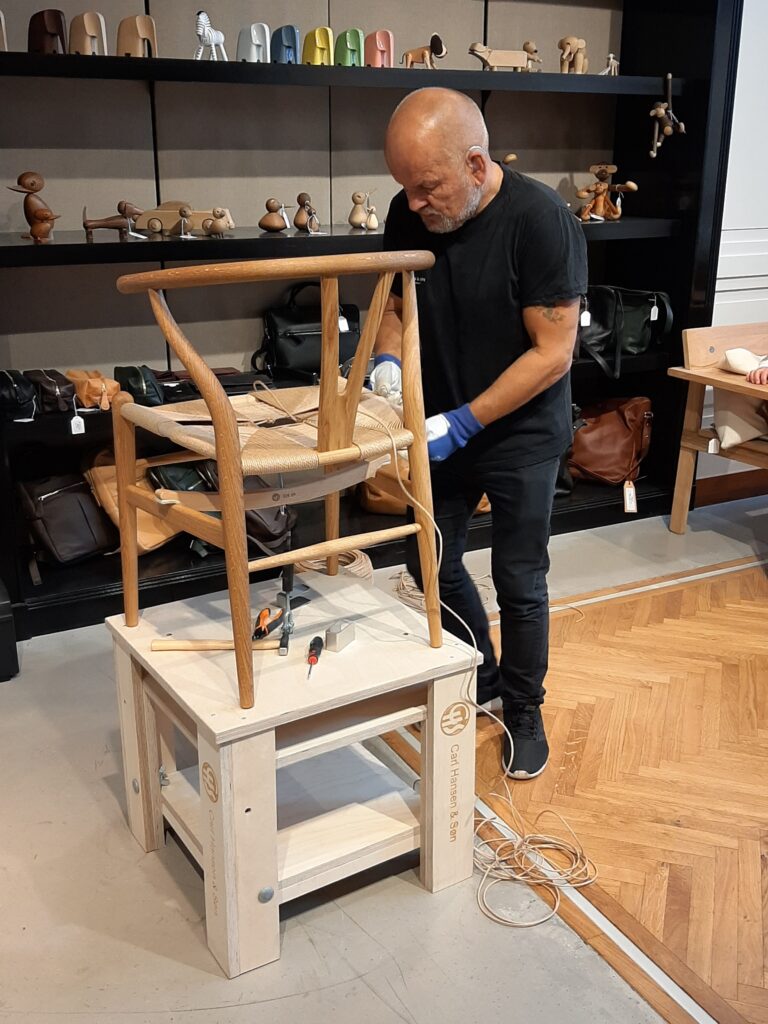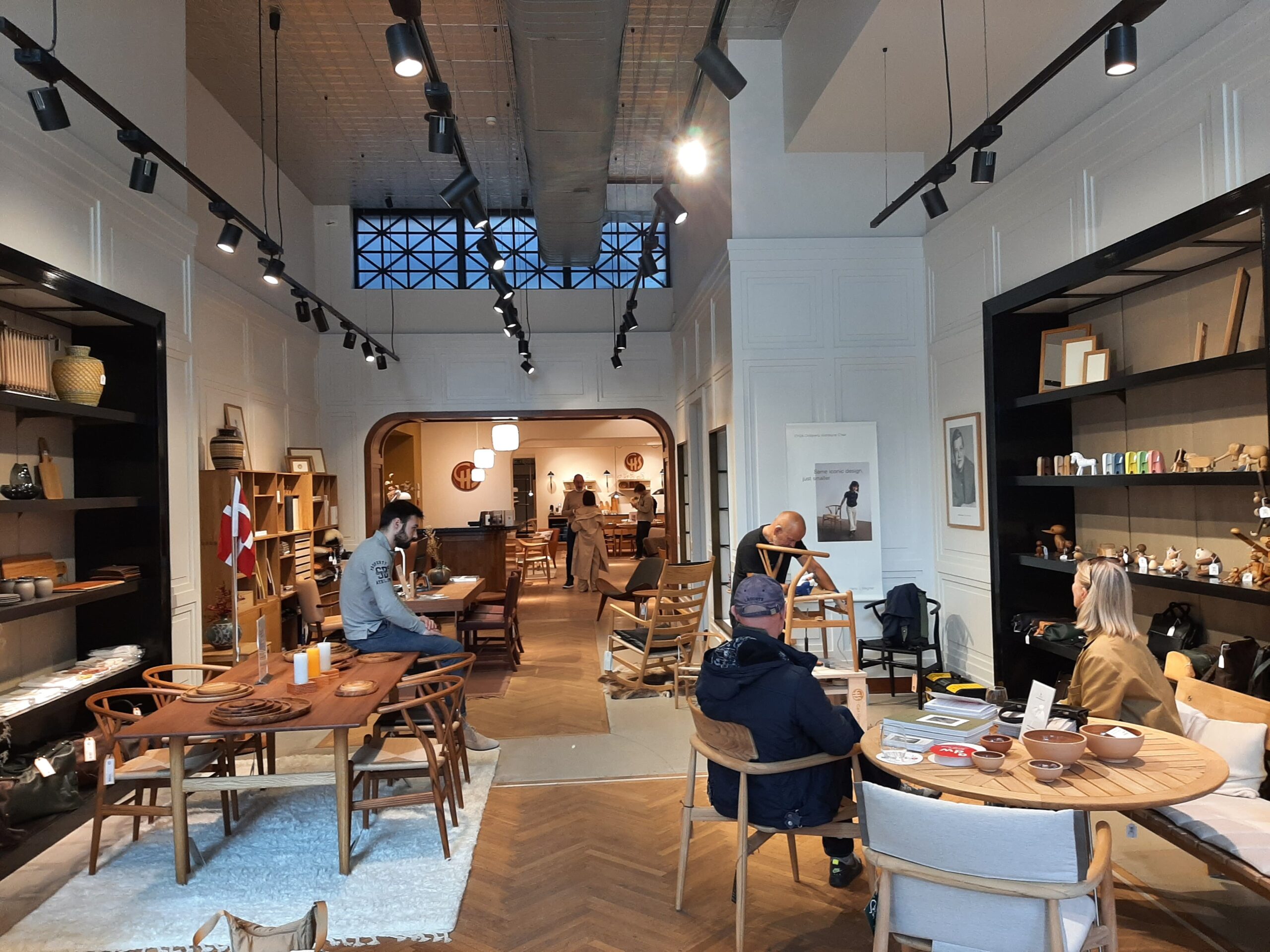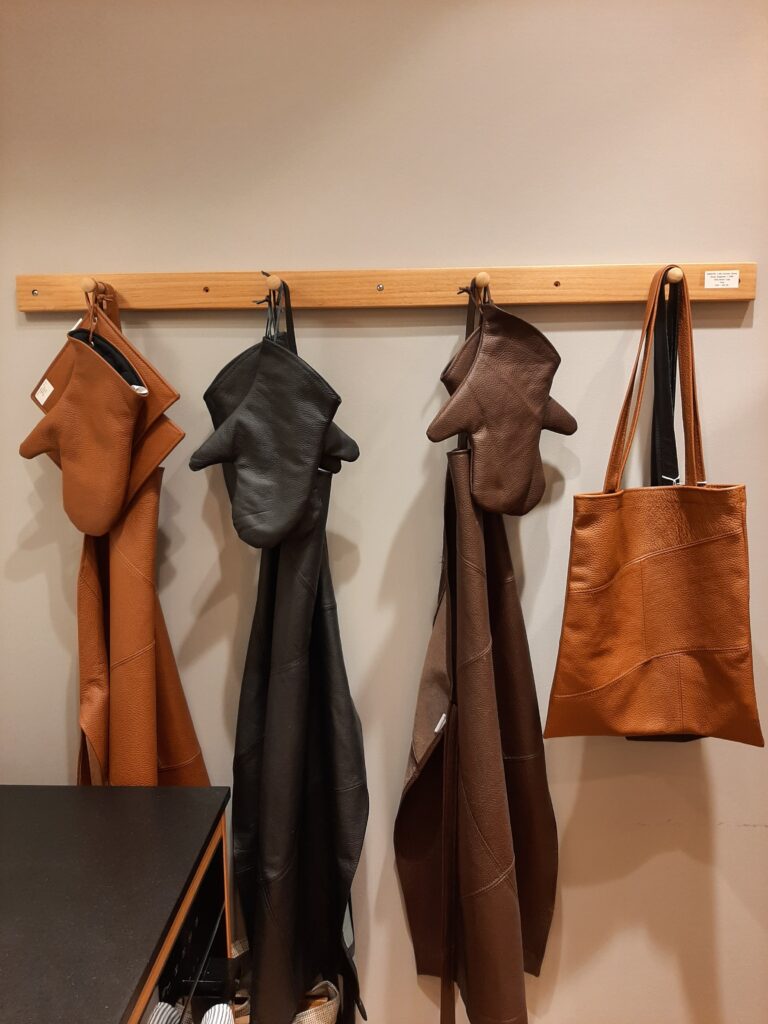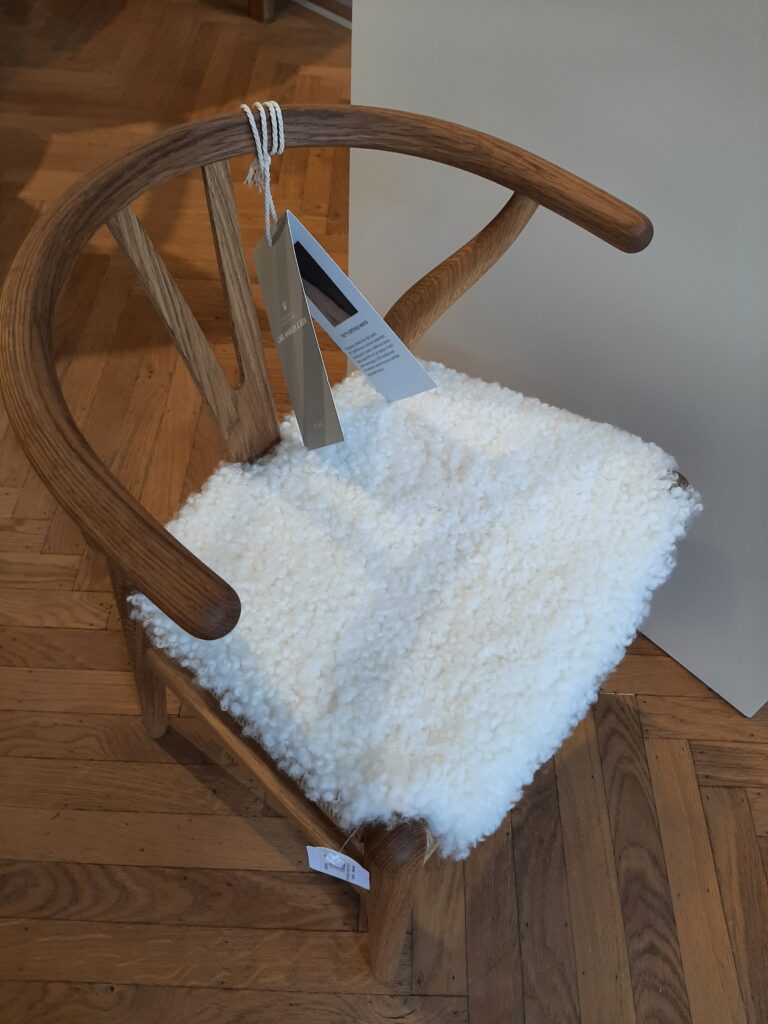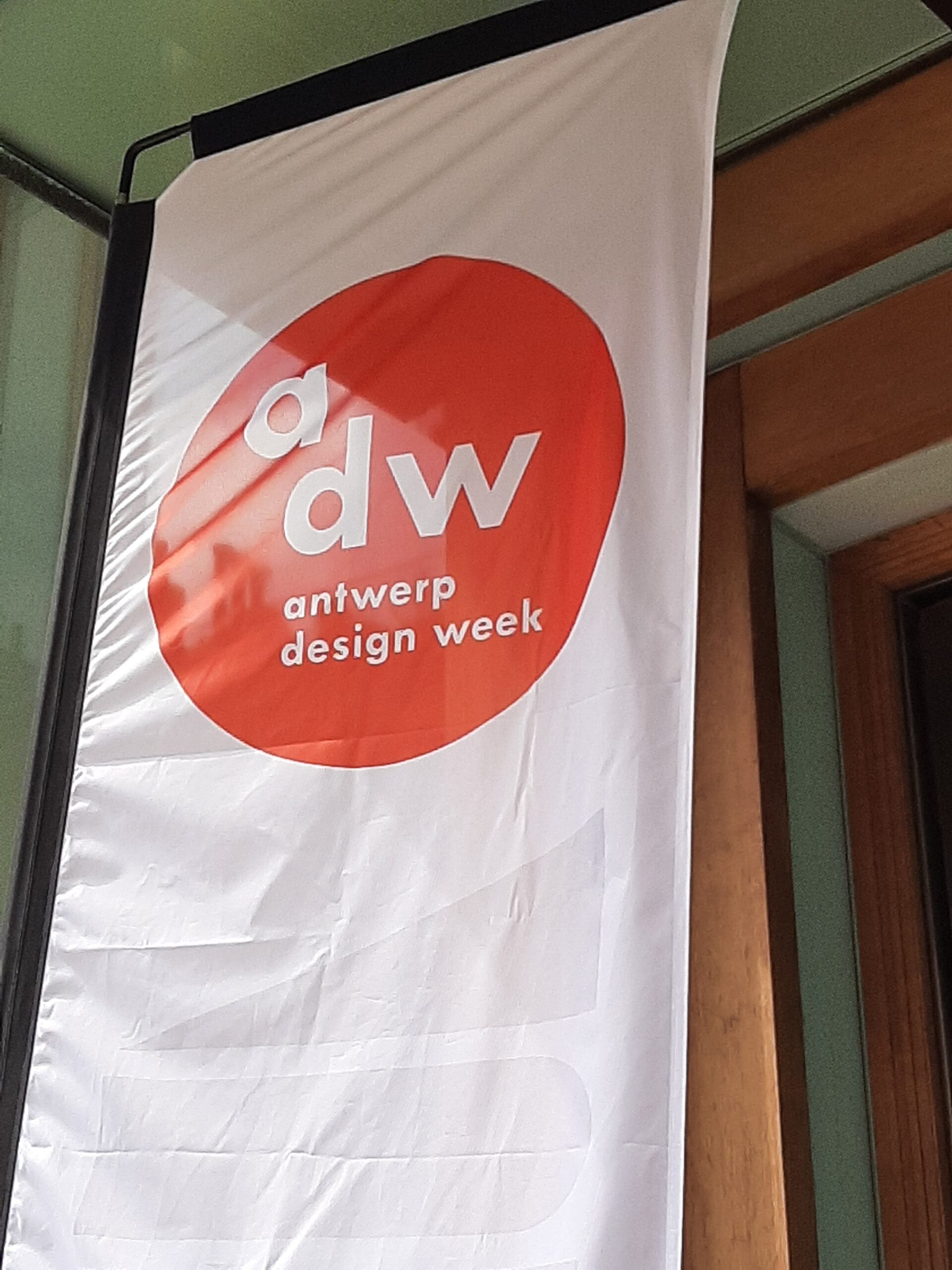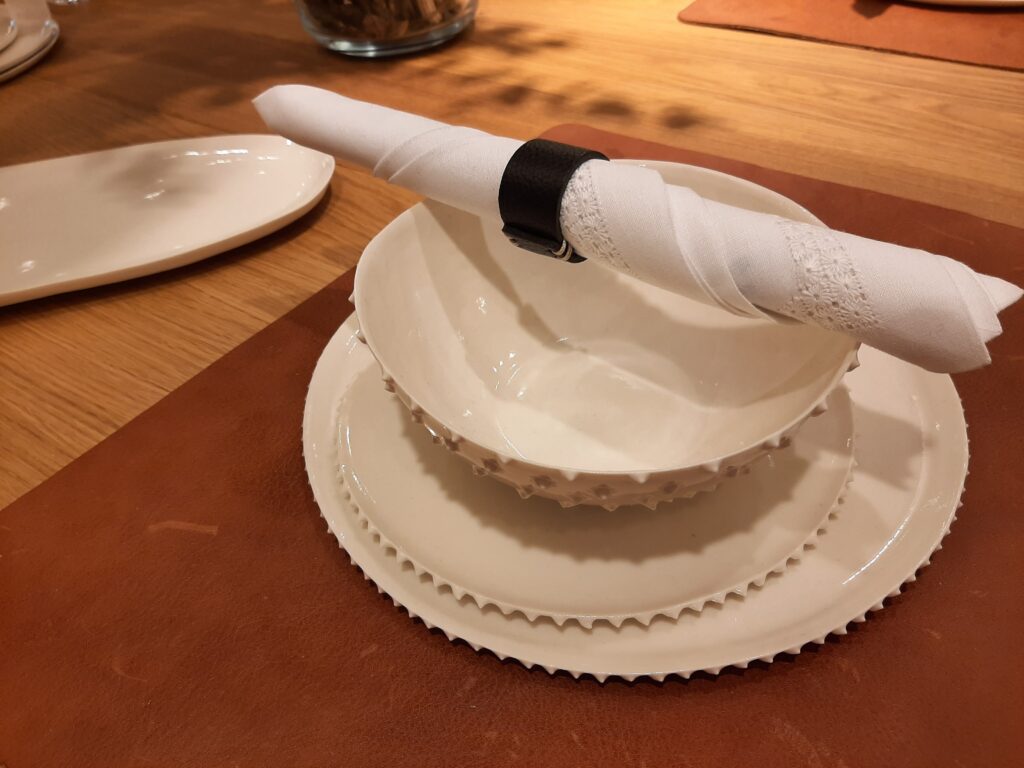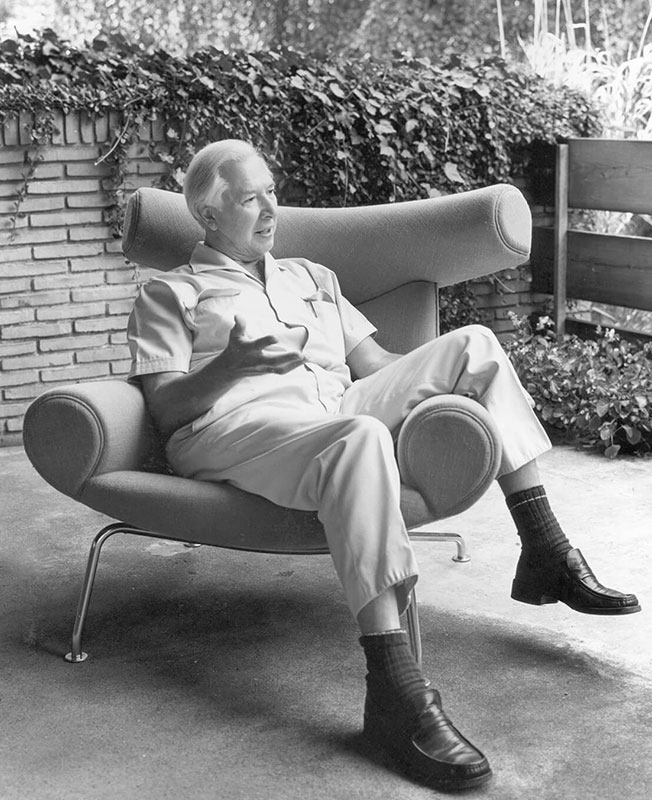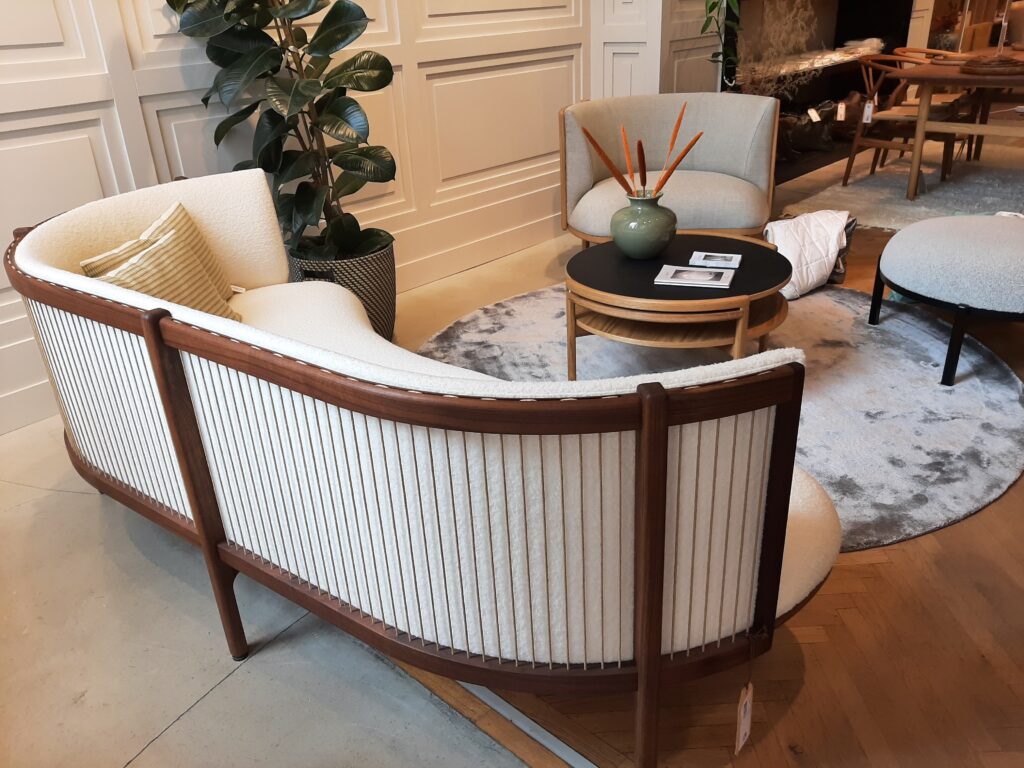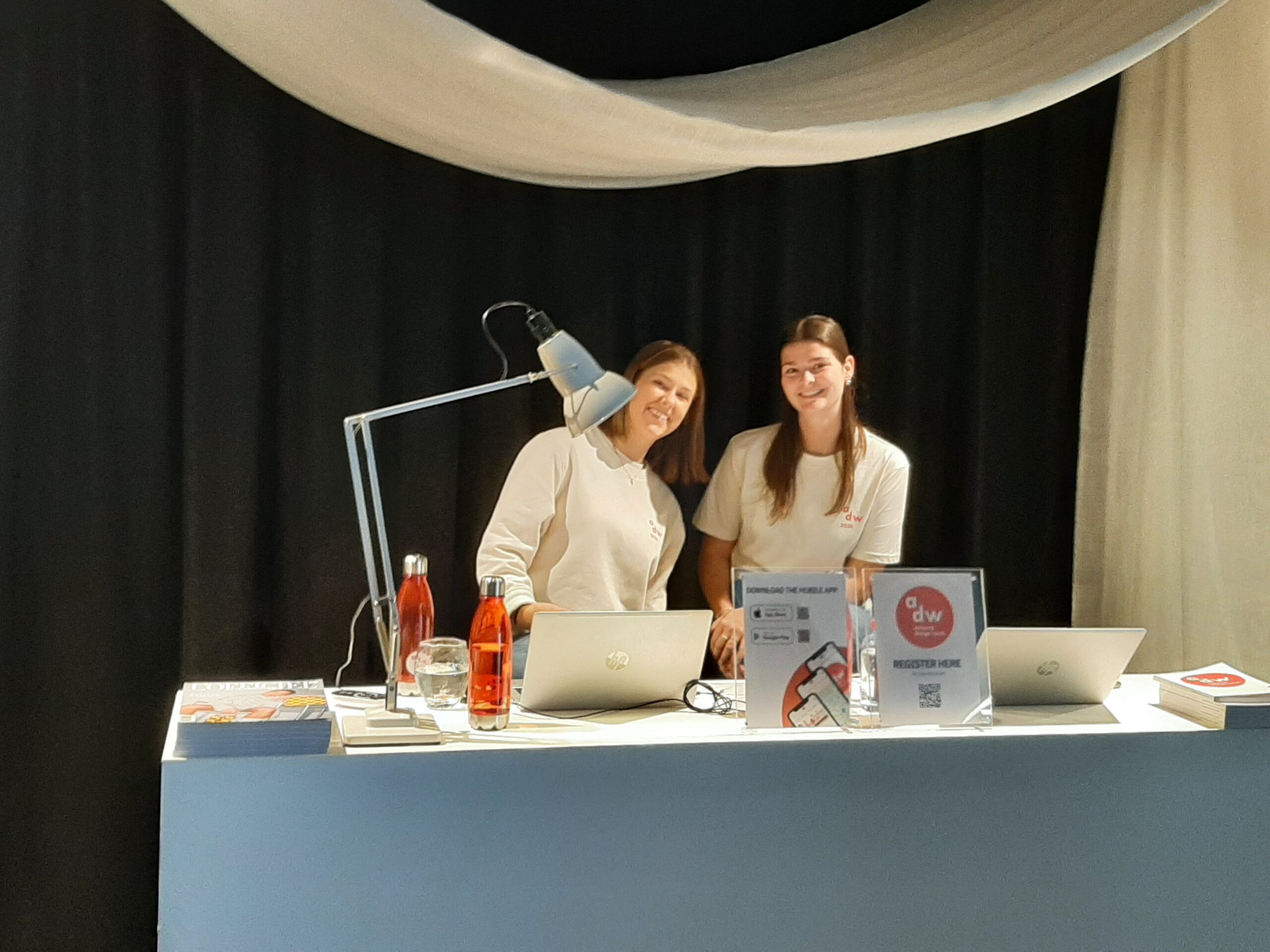If you approach Antwerp’s oldest building Castle “Het Steen” from the back entrance, you’ll see the headquarters of the Antwerpen Design Week festival (June 2-7, 2024) called “The Club”.
About its own design:
In the beginning was the charming The Hospitality Café, designed by “Frederik Delbart Design Studios” for Maison&Objet in Paris. Based on it, the studio designed the center of the Antwerp design festival “The Club” on the busiest spot of the Schelde promenade (it is being actively reconstructed and we hope that soon the wasteland will turn into a pleasant promenade). The young festival staff have turned The Club into a real Hospitality Café, embracing everyone who enters with warm hospitality.
From a professional point of view – in the Club you can meet design profs, find information about all the brands, design locations, events, transportation and hot spots of Antwerpen Design Week.
An interesting tidbit: by selecting a card with your favorite design object, you can use the Antwerp Map to find out where to see it and get instructions on how to get to the Showroom or Gallery.
In “The Club” you can start your introduction to the festival’s projects with the exhibition “The Flow”, inspired by the Scheldt River, the artery that connects Antwerp to the world. The aforementioned Frederik Delbart invited interior designer Peelvrouw (Sophie Peelman) and she combined the poetic, historical and economic significance of the river with a passion for aesthetic functionality. Taking one design piece from each selected brand – XLBoom, Serax, Ethnicraft and Buzzispace.
I fell in love with Cracklé, Sempre’s glasses with a bubbly effect like broken glass. The design philosophy of this brand harmoniously combines the simplicity of natural materials with a deep attention to detail. The Helena Cup series, designed in Belgium and carefully handcrafted by skilled artisans in Poland, is an exclusive line of glass. For the design week in Antwerp, Sempre delegated Cracklé. This special finish is achieved through the traditional glass blowing technique, which creates a characteristic crackled look texture on the surface of the glass. The surface of the glass also has indentations in which your fingers comfortably fall into and merge with it.
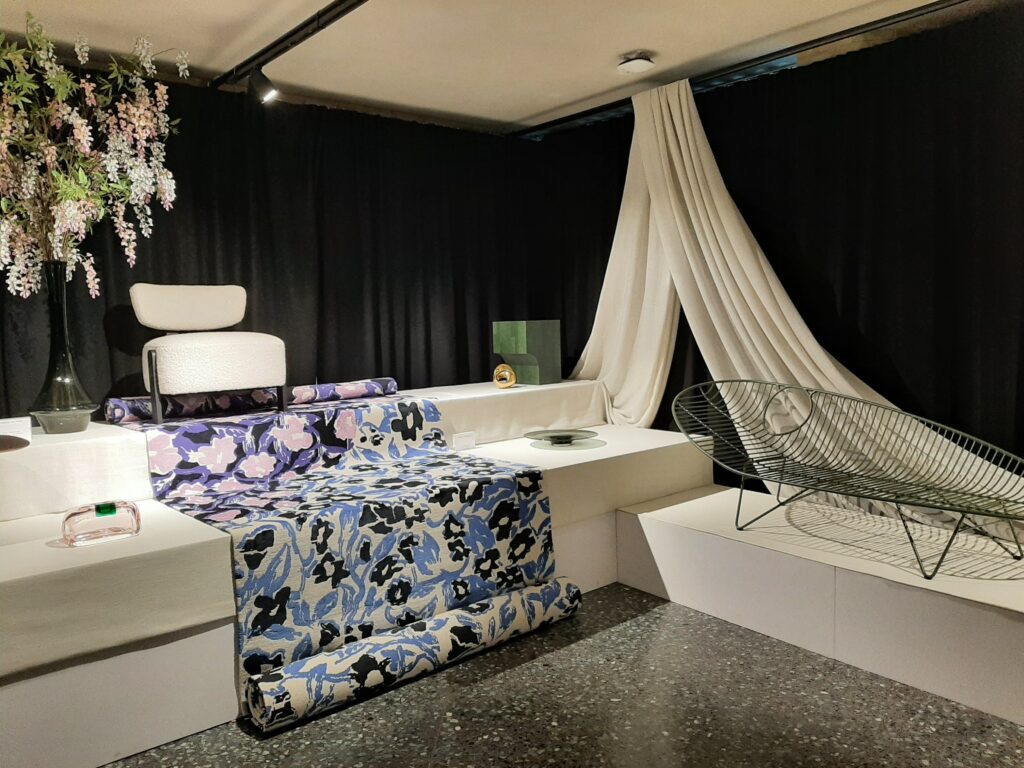
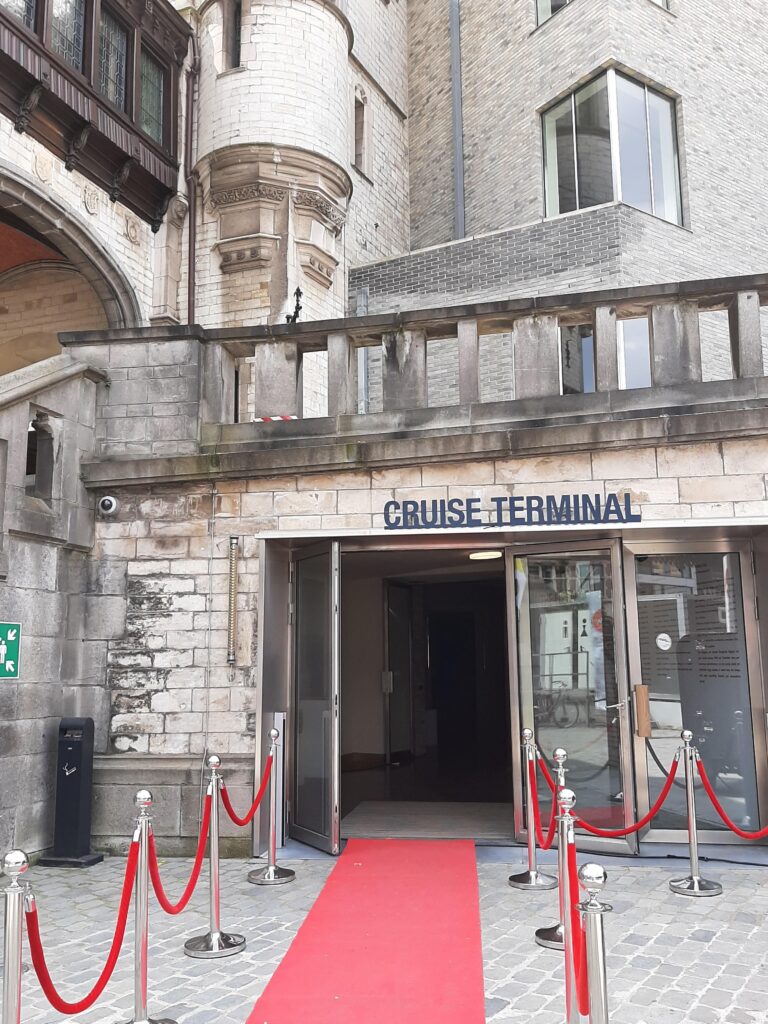
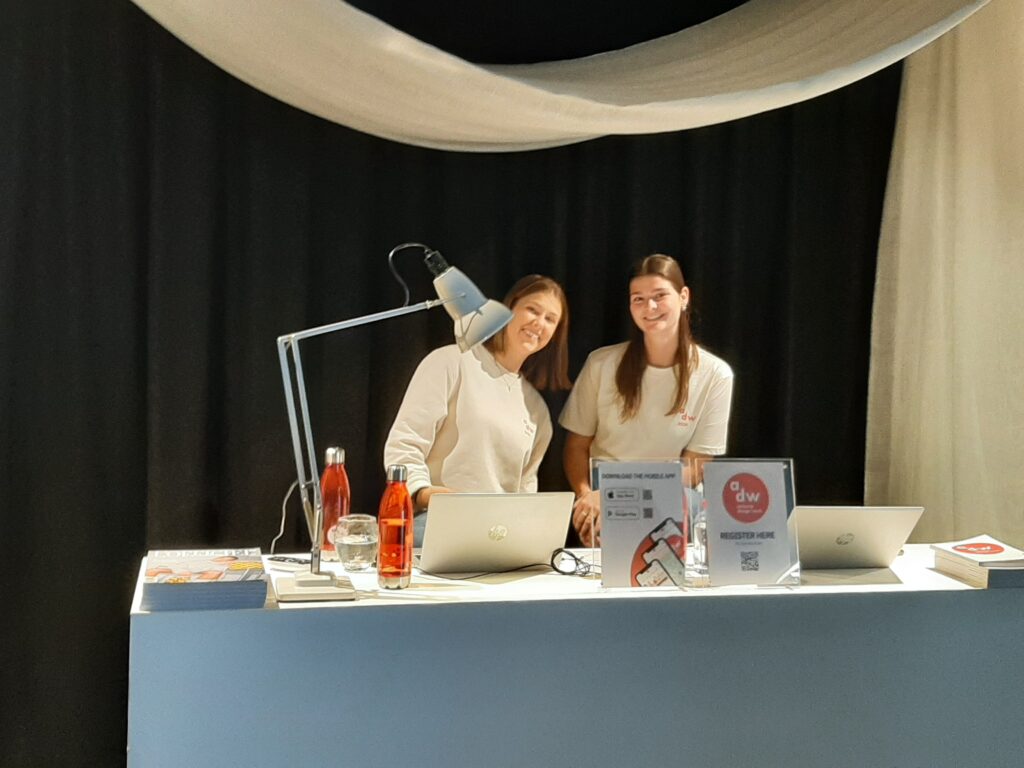
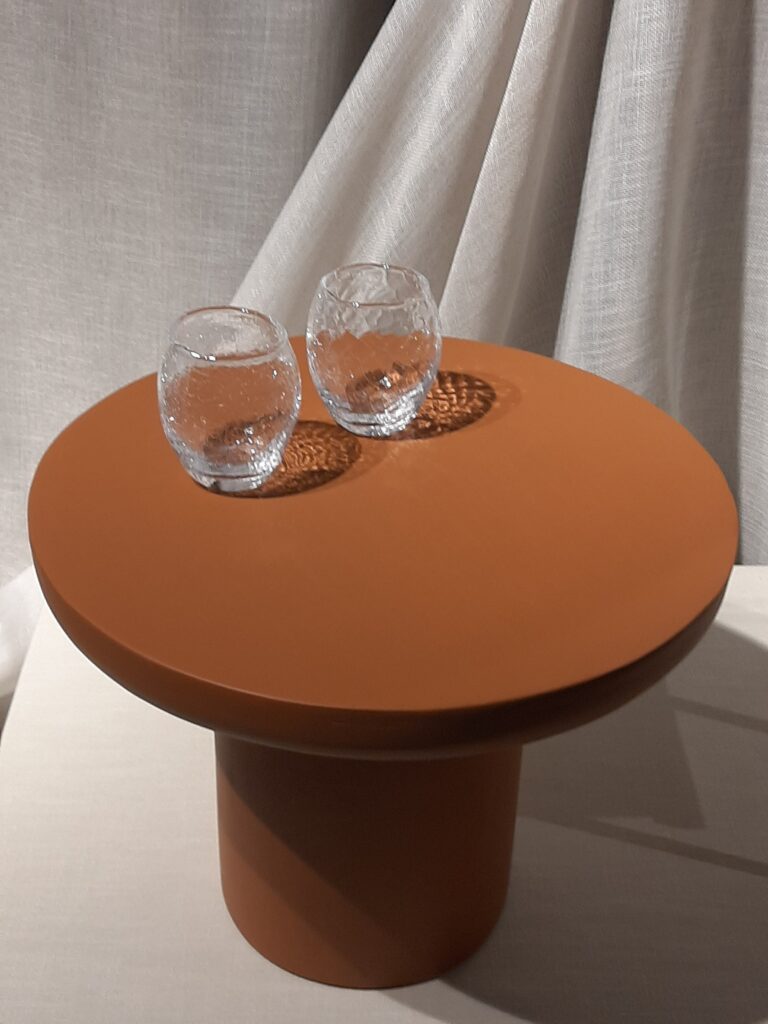
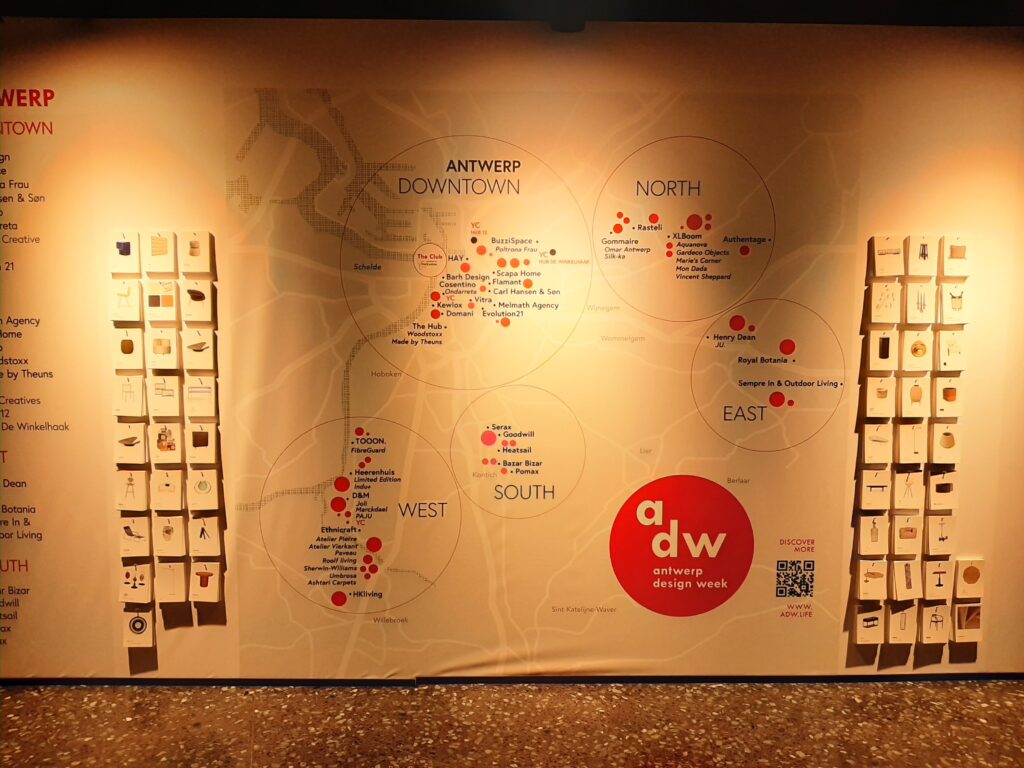
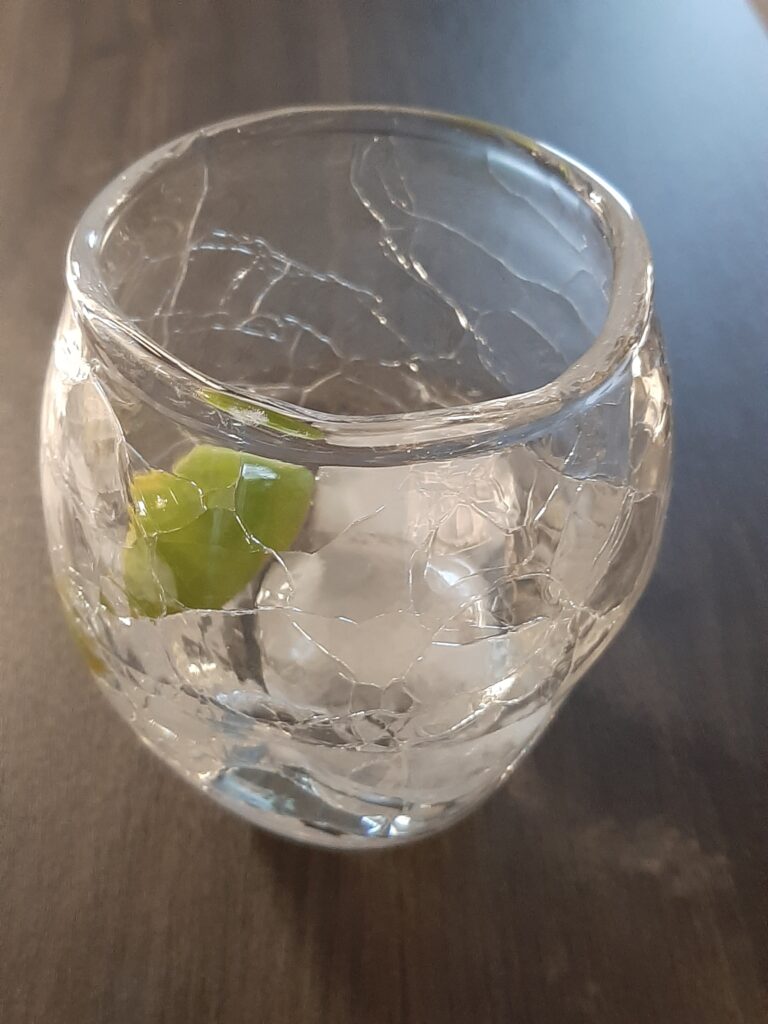
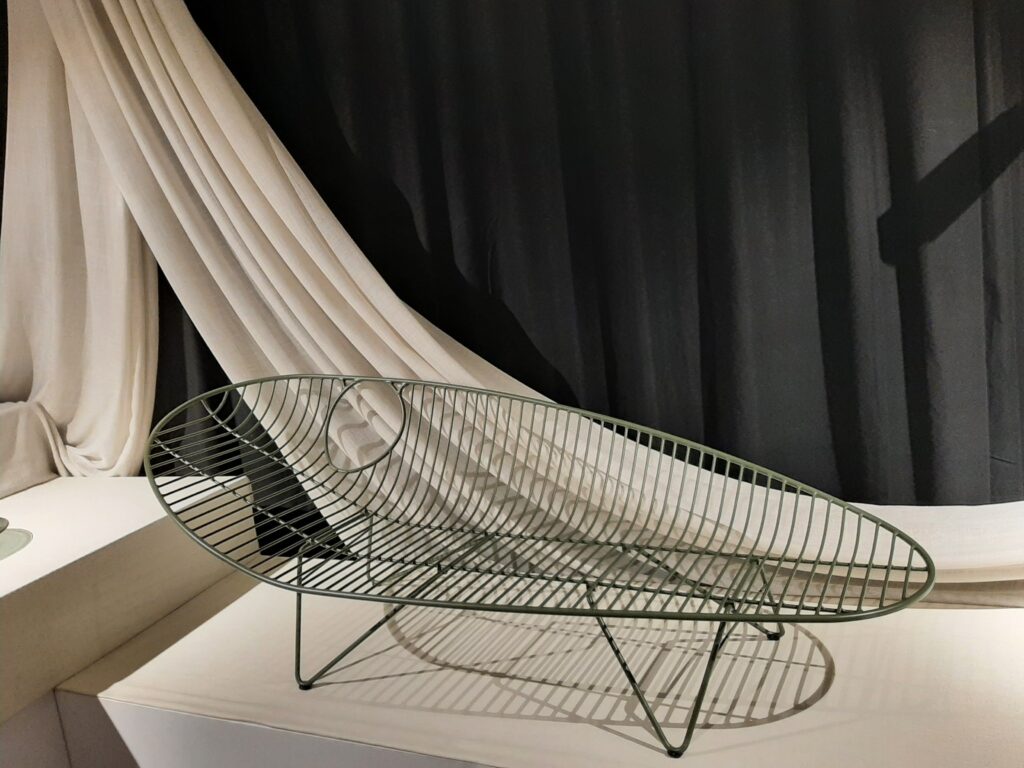
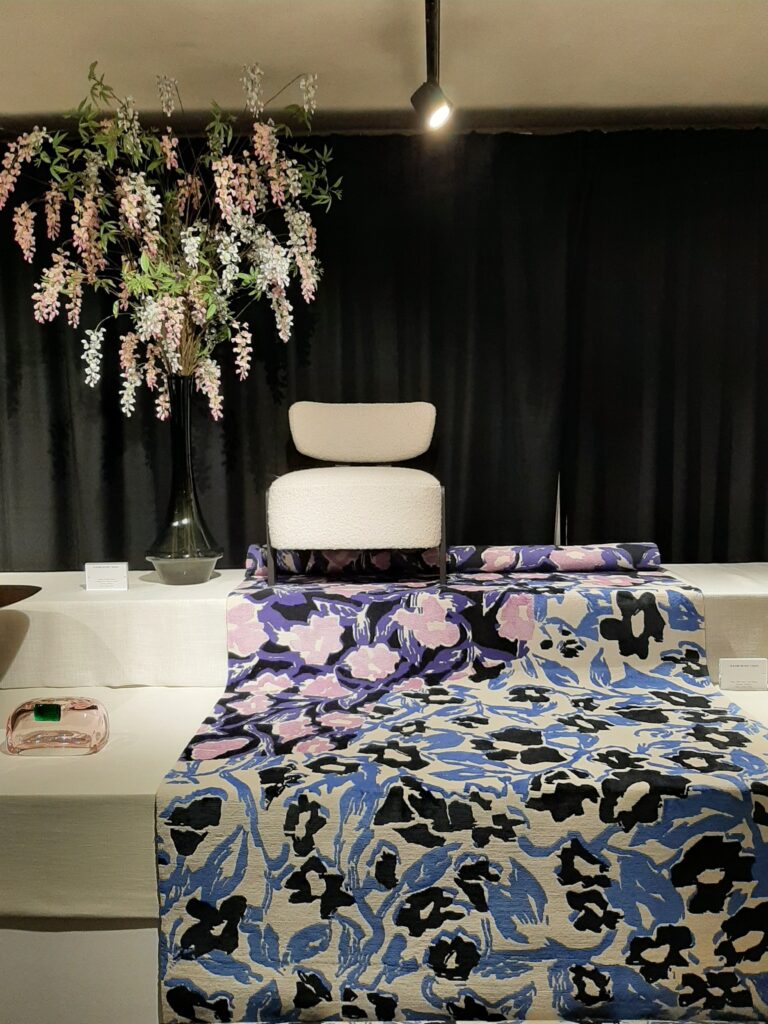
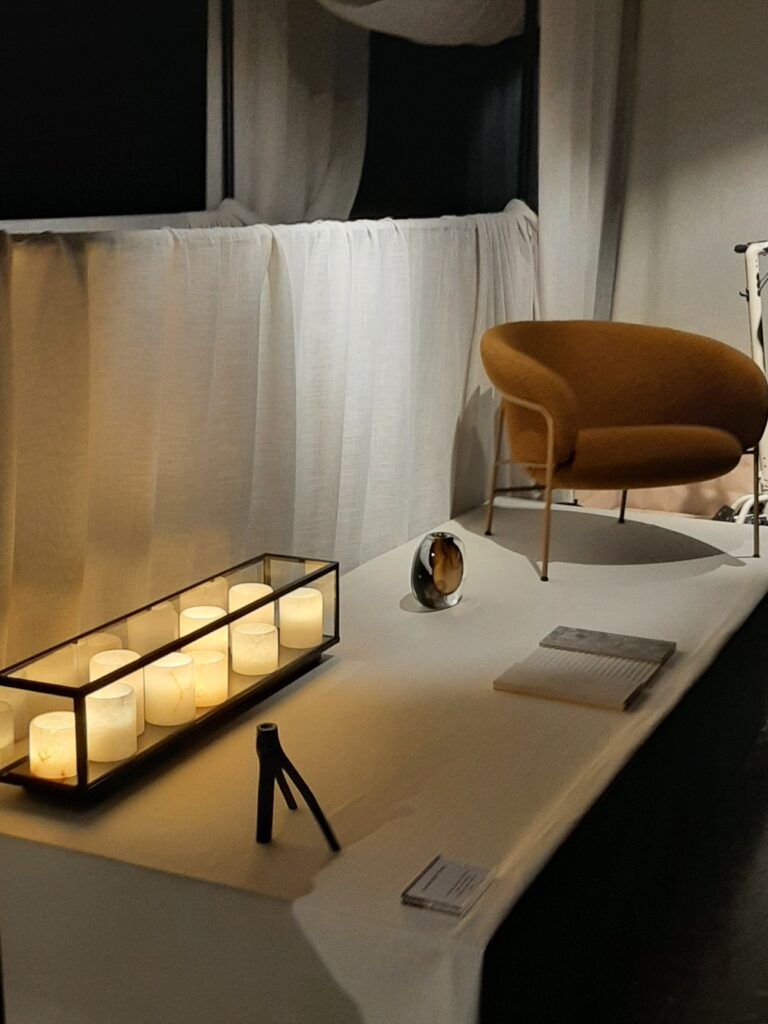
If you, like me, love Danish design, read on!
Hopland, a street of chic stores and expensive limousines (if there was room to park) is under renovation, but I advise you to ignore it and visit Carl Hansen & Son. You have a chance to get to know the “king of chairs and armchairs” Danish designer Hans J.Vegner (1914-2007) and, of course, sit in his famous chairs. The store dedicated its collection to the designer, who created 500 models(!) in his lifetime
At the age of 15, the son of a shoemaker made his first chair. In the forge of modernism at the Danish Academy of Fine Arts, he forged his skills and formed his motto: “design is simplification, getting rid of the superfluous”.
I will tell you about one of his legendary Wishbone chairs, which owes its origin to Hans’ love of anatomy, and in particular the skeletons of birds and fish. The design of the backrest of this chair is based on the forked bone, which is located in the breast of birds and allows them to maneuver in flight. We witnessed the weaving of the seat of this chair – the craftsman cleverly designed a wicker chair popular in 1950-60s Europe in half an hour. My mother-in-law had a whole set of them. The company “Carl Hansen & Son” began production of “Wishbone” in 1950 and it was an absolute hit of interior design. A very nice new model of the baby chair.
In one of the niches of the showroom you can also see the famous Papa Bear chair, named after a critic who compared the armrests to “the paws of a huge bear that hugs you from behind”.
